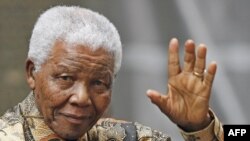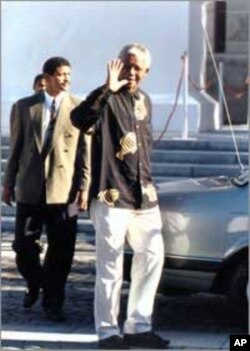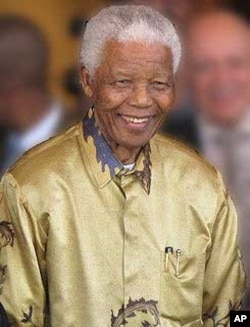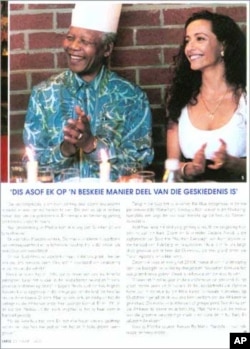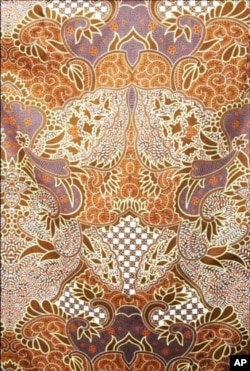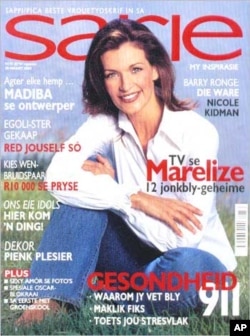One evening in early May 1994, Desre Buirski received the “tip off” that altered the course of her life. She heard that the world’s most famous freedom fighter, Nelson Mandela, would be visiting a synagogue near her home in Cape Town the next morning.
He’s wearing his very first ‘Madiba shirt,’ given to him by Cape Town fashion designer Desre Buirski
The African National Congress (ANC) leader, who’d been imprisoned for 27 years by a white supremacist government for opposing apartheid, was in the city to be inaugurated as South Africa’s first democratic president. Just a few weeks before, Mandela had emerged victorious from the country’s first multiracial polls.
“Just like millions of people around the world, I had thought to myself that, ‘One day, I am going to see Nelson Mandela in the flesh – even if it is just from a distance.’ So when I heard the night before that he was paying a visit near where I lived, I thought, ‘Well, here’s my chance to turn my little dream into reality.’”
At the time, she was a struggling fashion designer. “I thought, ‘Okay, I need to definitely come up with some idea to give him as a gift.’” So Buirski “dipped into” a cupboard and found a man’s shirt she’d previously made.
“It had long sleeves. It happened to be extra-large. I knew that this would probably fit (Mandela) because he was very tall. I grabbed it. I thought, ‘Well, even if he doesn’t use it, he can give it away,’” she says.
It was a black shirt, with gold and cream fish patterns embroidered on it. Buirski wrapped it up. She wrote a note to Mandela on her business card and included it in the package.
‘They’ll think it’s a bomb….’
The next morning, Buirski made her way down to the synagogue, dressed in a striking outfit of black, green and gold – the colors of the ANC.
“When I arrived there, there were a whole lot of photographers outside. I said to them, ‘Do you think I’d be able to get this package to President Mandela?’ They looked at me and said, ‘Come on! (His bodyguards) are going to think there’s a bomb in there!’ So I sheepishly went inside clutching my precious cargo,” she says.
Buirski watched “in awe” as Mandela gave a speech to the Jewish community. Afterwards, when one of his minders passed near her, she says she “took a chance,” and “thrust” the gift at him, saying, “That’s for President Mandela; please give it him!”
“Amazingly,” she says, the bodyguard took the package. But she had “little hope” of the shirt ever finding its way to Mandela. Nevertheless, Buirski says that at the time she was “happy as a lark in the sky” at having been so close to her hero.
The dress rehearsal for Mandela’s inauguration took place a few days later. The day after that, while she was at a gym, a friend called her and “excitedly” told her to read that morning’s newspaper.
“I went and got the newspaper, and there it was on the right-hand page – this huge photograph of (Mandela) wearing this beautiful shirt of mine! It just looked so incredible on him, like it was just meant to be. There he was, giving the world a huge big wave (in my shirt)! Of course, it kind of hit me like a two-by-four (truck). I couldn’t quite believe that this was real. And so began my relationship – this incredible relationship, this incredible journey – that I’ve had with Nelson Mandela, as his shirt maker.”
‘Will you make silk shirts for me?’
“Moved” and “inspired beyond words,” Buirski began making more shirts similar in style to the one she’d given the president as a present. In the months that followed Mandela’s inauguration, she sent them regularly to his office, always receiving letters of gratitude him. She became acquainted with Mandela’s personal assistant at the time, Mary Maxadana.
“In June 1995, I received a call out of the blue from Mary. She said, ‘When we’re next in Cape Town, I’m going to organize for us to have breakfast with the president. I was like, ‘Oh my God!’” Buirski exclaims, continuing, “Then Mary said, ‘How about tomorrow morning, nine o’ clock?’ I just couldn’t believe it. That was just the most amazing moment – that I was actually going to meet the president and have a one-on-one with him!’”
They met at Tuynhuys, Mandela’s Cape Town residence. “I got the opportunity to meet this superhuman man,” Buirski says, recalling it as a “very surreal moment. I remember standing outside his office, and he opened the door, and there he was standing. He greeted me. The next thing I remember is hugging him and holding him and I was in tears.”
During their meeting, she told Mandela that she wanted to be “of some sort of assistance” to him. She says he immediately replied, “‘Right! How would you like to make silk shirts for me?’”
Since then, Buirski estimates she’s made him more than 120 of them.
“The ones that Mandela specifically wears are silk, hand-painted shirts, and they are…. brightly colored with geometric (patterns) and floral designs…. At first he told me he liked earth tones, but he’s probably got every single color in the rainbow as part of his collection of shirts that I’ve done for him.”
Buirski’s shirts became Mandela’s signature dress style and are known as ‘Madiba Shirts.’ ‘Madiba’ is the name of Mandela’s Xhosa clan and is used to indicate respect and affection for him.
Mandela’s support for her creations partly enabled Buirski to establish a business with branches in most of South Africa’s big cities. She exports shirts around the world. She also made several shirts for Hollywood actor, Morgan Freeman, when he played Mandela in the international hit film, Invictus.
Mandela ‘offends’ Giorgio Armani
Buirski says in a number of meetings with Mandela down the years, he gave her “a few” reasons for liking her shirts so much. “The first being that he’d been in such drab prison garb for so long (and) these soft, shiny, loose fitting silk shirts, with their bright colors, are about as far away from prison clothing as one can get,” she explains.
Buirski’s convinced that by wearing her shirts, Mandela was, in effect, “declaring himself a free man. I think the silk shirts and the shirts in general gave him a sense of freedom, a sense of expression…. (And) for him to come out of jail and wear boring, stiff suits just didn’t do it for him.”
She recalls Mandela, during his presidency, telling her about a phone call he’d received from world famous Italian fashion designer Giorgio Armani “who was quite upset with him that he hadn’t been using this suit that he’d sent him.”
Buirski laughs, “Armani apparently asked him why he’d chosen to wear these ‘wild shirts’ as his suit. That was definitely a feather in my cap when he told me that.”
She maintains that her shirts are “very much” a reflection of Mandela’s “alternative” individuality. “He was into change, moving forward, doing things differently. He was a very strong individual, very much his own man. I don’t think he wanted to look like every other world leader, dressed in a grey or black suit. He wanted to look and feel like Nelson Mandela, and these shirts allowed him to do that.”
Mandela’s ‘massive footprint’
Buirski says while Mandela was “definitely a man of the people,” he also wanted to be a “man apart. Instead of standing up on international podiums with all the other leaders in their suits and ties, telling us all how the world should be run, he stood apart from all of them, in his colorful shirts, and gave the world a different message: that of peace and reconciliation – no matter what the cost,” she says.
The renowned shirt maker will remember Mandela as an “incredible human being” who “shared humility, kindness, vision and an ability to forgive” with billions of people.
“He rubbed off on many of us. He’s the main reason why South Africa continues to survive, despite all our problems – because when things start to go wrong, we think of what Mandela would have done,” Buirski says. “He’s just left this massive footprint on the world.”
Nelson Mandela will be revered for his extraordinary qualities as a human being…and Desre Buirski will go down in South African history as the woman who created his famously distinctive, eccentric shirts.
She says, “I’m so incredibly honored to have been just a miniscule part of this great man’s life.”




